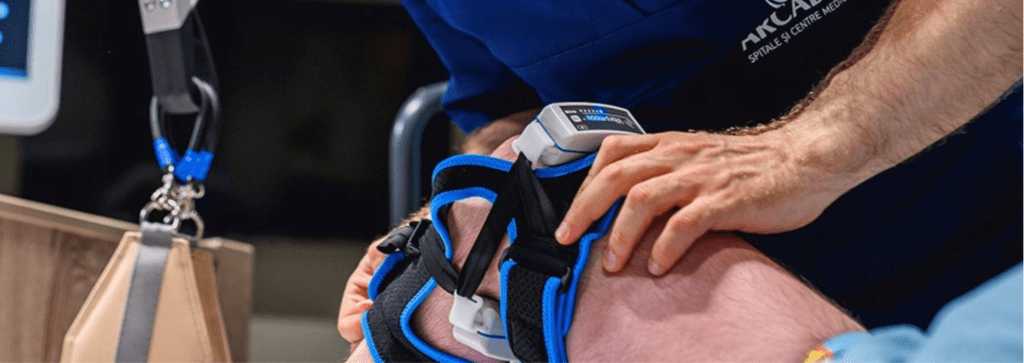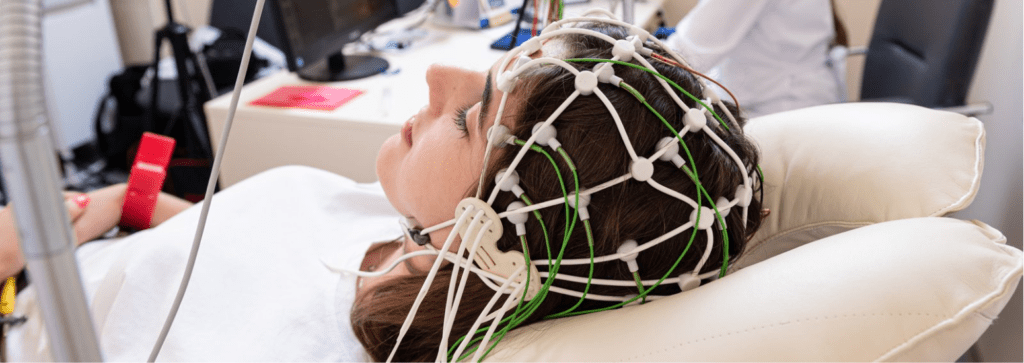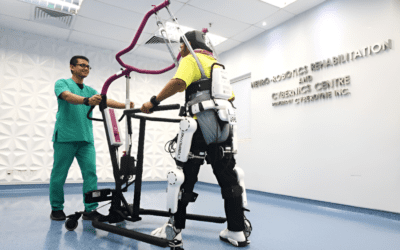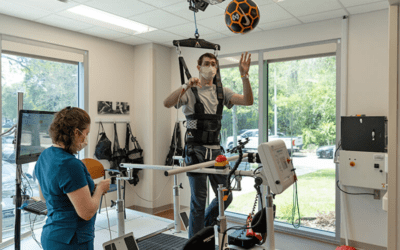Neurorehabilitation infrastructure plays a pivotal role in helping individuals recover from brain injuries, strokes, and neurological disorders. By integrating innovative solutions, we can enhance the accessibility, efficiency, and outcomes of these facilities, unlocking their full potential to transform lives.
Innovative Solutions Driving Neurorehabilitation

- Advanced Technology Integration:
- AI and Machine Learning: Personalized therapy plans based on patient data and real-time progress tracking.
- Robotics: Devices like exoskeletons and robotic arms aid in precise and repetitive movements, crucial for motor recovery.
- Virtual Reality (VR): Immersive environments for cognitive and motor skill rehabilitation, improving engagement and outcomes.
- Tele-rehabilitation Services:
- Remote therapy sessions using digital platforms make Neurorehabilitation accessible to those in underserved areas.
- Wearable devices monitor progress and provide feedback to therapists in real-time.
- Interdisciplinary Collaboration Tools:
- Unified platforms for healthcare teams to share patient data and adjust therapies dynamically.
- Integration of electronic health records (EHR) to streamline care coordination.
- Patient-Centric Facility Design:
- Adaptive spaces that cater to varying levels of mobility and sensory needs.
- Smart environments with sensors to track patient activity and ensure safety.
- Data-Driven Insights:
- Analytics to identify effective interventions and improve therapy protocols.
- Long-term monitoring for evaluating recovery trends and predicting outcomes.
Impact of Innovative Neurorehabilitation Infrastructure
- Enhanced Recovery Outcomes: Customized therapies and advanced tools accelerate recovery timelines.
- Increased Accessibility: Remote and adaptable solutions make quality care available to more patients.
- Cost Efficiency: Technology-driven efficiency reduces the burden on healthcare systems and patients.
- Empowered Patients: Engaging and interactive solutions foster active participation in recovery journeys.
Investing in innovative Neurorehabilitation solutions is crucial for building a future where neurological recovery is more effective, accessible, and patient-centered. By embracing these advancements, we can unlock the full potential of Neurorehabilitation infrastructure, transforming lives and revolutionizing care.
Key Advancements in Neurotechnology:

- Brain-Computer Interfaces (BCIs):
- Devices that create direct communication pathways between the brain and external systems.
- Enabling paralyzed individuals to control prosthetics or communicate through thought alone.
- Enhancing cognitive and sensory functions in real-time.
- Neurostimulation Devices:
- Techniques like transcranial magnetic stimulation (TMS) and deep brain stimulation (DBS) to treat conditions such as Parkinson’s disease, depression, and chronic pain.
- Non-invasive Neurostimulation for cognitive enhancement and Neurorehabilitation.
- Neuroimaging and Diagnostics:
- High-resolution imaging technologies like functional MRI (fMRI) and EEG advancements for real-time monitoring of brain activity.
- AI-driven analytics for early detection of neurological conditions like Alzheimer’s and epilepsy.
- Wearable Neurotechnology:
- Portable devices for tracking brain activity and providing biofeedback to improve focus, reduce stress, and monitor sleep.
- Examples include headbands for meditation and EEG caps for remote Neurotherapy.
- Neurogenomics and Personalized Medicine:
- Genetic insights into neurological disorders for personalized treatment plans.
- Combining Neurotechnology with genomics to predict and prevent neurological conditions.
- Virtual Reality (VR) and Augmented Reality (AR):
- Immersive environments for treating PTSD, anxiety, and phobias through controlled exposure therapy.
- Applications in Neurorehabilitation for stroke and brain injury recovery.
- Artificial Intelligence (AI) in Neurotechnology:
- AI-powered tools to decode brain signals, predict disease progression, and personalize interventions.
- AI-assisted Neurofeedback systems to optimize cognitive training.
Impact of Advancements in Neurotechnology
- Healthcare Transformation: Faster diagnosis, better treatment outcomes, and enhanced quality of life for individuals with neurological conditions.
- Rehabilitation Enhancement: Neurotechnology-driven therapies accelerate recovery and improve independence.
- Cognitive Enhancement: Applications in learning, productivity, and mental health optimization.
- Ethical and Social Considerations: Innovations raise questions about privacy, accessibility, and the potential for misuse, requiring ongoing dialogue and regulation.
Integrating robotics for enhanced mobility and accessibility
This empowers individuals with disabilities or injuries to regain independence and improve their quality of life. Advanced robotic exoskeletons and prosthetics enable precise movements, mimicking natural motion. These technologies aid in rehabilitation by providing targeted, repetitive exercises that promote neural and muscular recovery. By combining robotics with real-time feedback and AI, mobility solutions are becoming more intuitive and effective.
Personalized rehabilitation programs:
These programs tailor therapies to an individual’s unique needs, goals, and recovery pace. Using data-driven insights and adaptive technologies, these programs optimize outcomes by focusing on specific challenges and strengths. This approach fosters faster, more effective recovery while enhancing patient engagement and motivation.
Data-driven insights for Patient Outcomes
Data-driven insights track patient progress by analyzing real-time metrics from wearables, neuroimaging, and therapy sessions. These insights help identify trends, adjust treatment plans, and predict outcomes for personalized care. By leveraging analytics, healthcare providers can ensure more precise, efficient, and measurable recovery.
Unlocking the potential of Neurorehabilitation infrastructure requires embracing innovative solutions that integrate advanced technology, personalized care, and interdisciplinary collaboration. From robotics and virtual reality to telerehabilitation and data-driven tools, these advancements enhance accessibility, efficiency, and outcomes for patients.
By reimagining Neurorehabilitation with cutting-edge approaches, we can create transformative systems that empower individuals to rebuild their lives and achieve their fullest potential.



